
Combcrested Jacana infant, Yellow Water Wetlands, Kakadu NP, NT Dave's Travelogues
Provisional: Either: 1) member of exotic population that is breeding in the wild, self-propagating, and has persisted for multiple years, but not yet Naturalized; 2) rarity of uncertain provenance, with natural vagrancy or captive provenance both considered plausible. When applicable, eBird generally defers to bird records committees for.
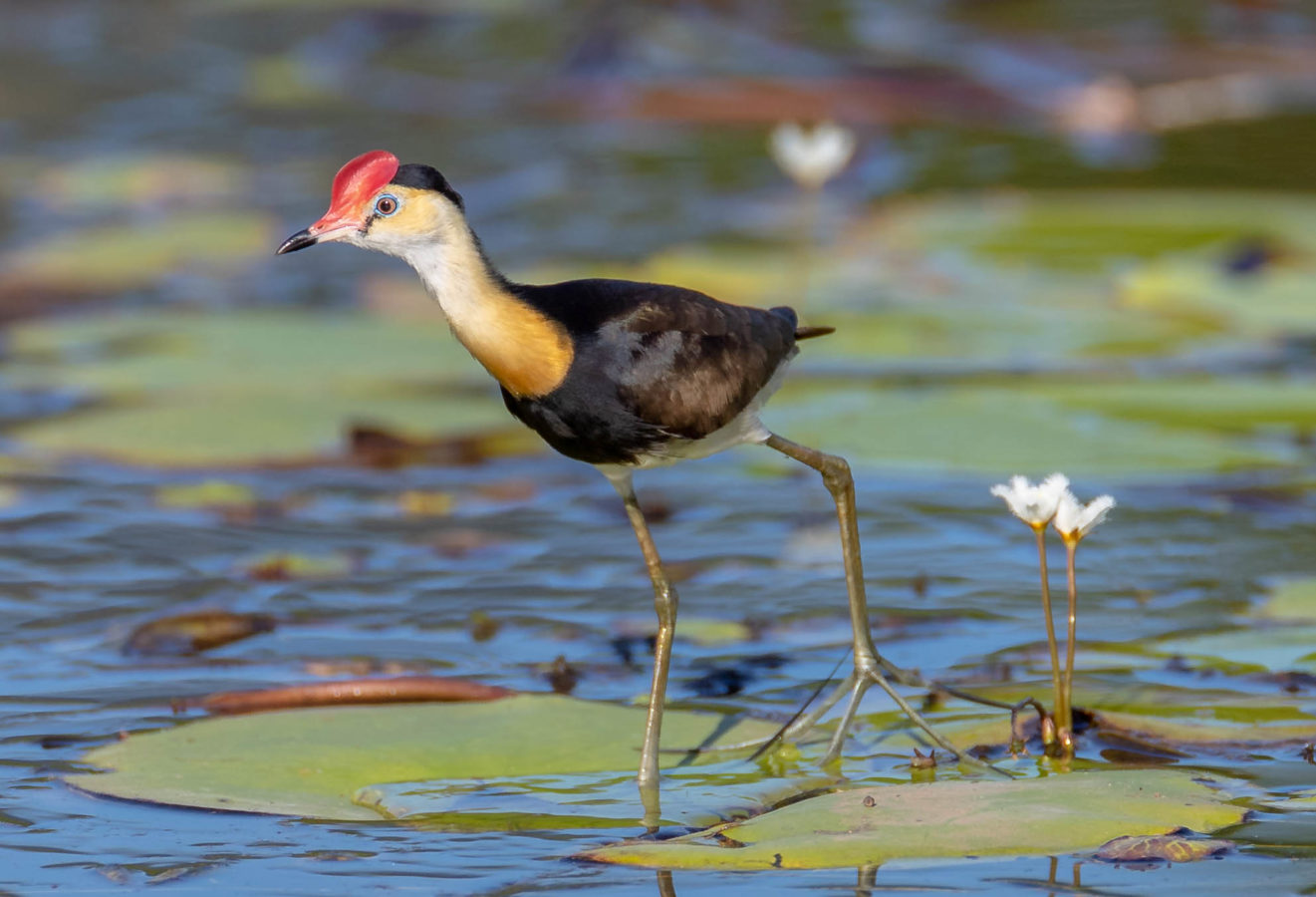
Combcrested jacana
The comb-crested jacana (Irediparra gallinacea), also known as the lotusbird or lilytrotter, is the only species of jacana in the genus Irediparra. Like other jacana species, it is adapted to the floating vegetation of tropical freshwater wetlands. This species is unmistakable. It has a black crown and hindneck with a fleshy red wattle covering.
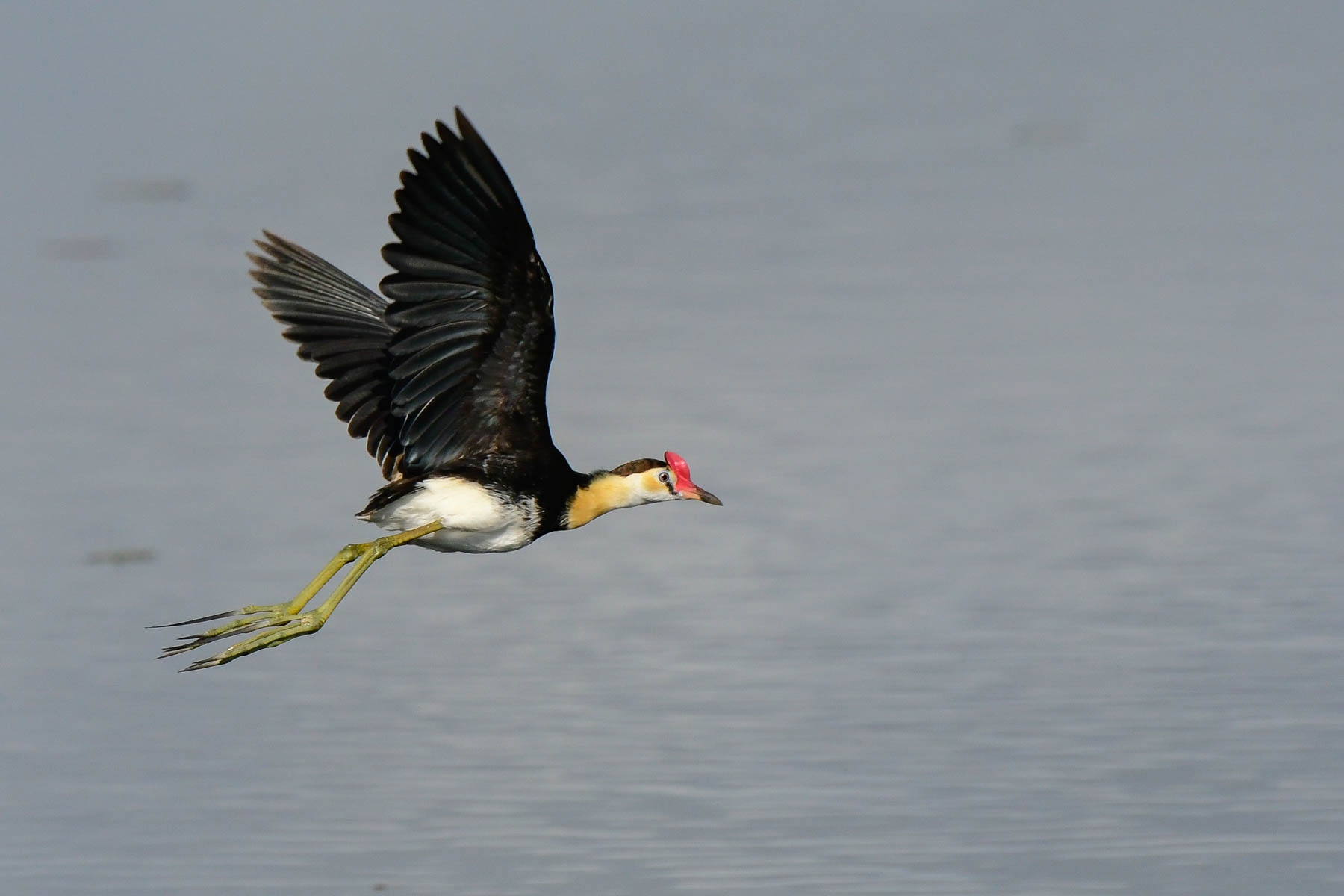
Combcrested Jacana (Image ID 43509)
The comb-crested jacana ( Irediparra gallinacea ), also known as the lotusbird or lilytrotter, is the only species of jacana in the genus Irediparra. Like other jacana species, it is adapted to the floating vegetation of tropical freshwater wetlands. Description A comb-crested jacana at Corroboree Billabong, Northern Territory, Australia
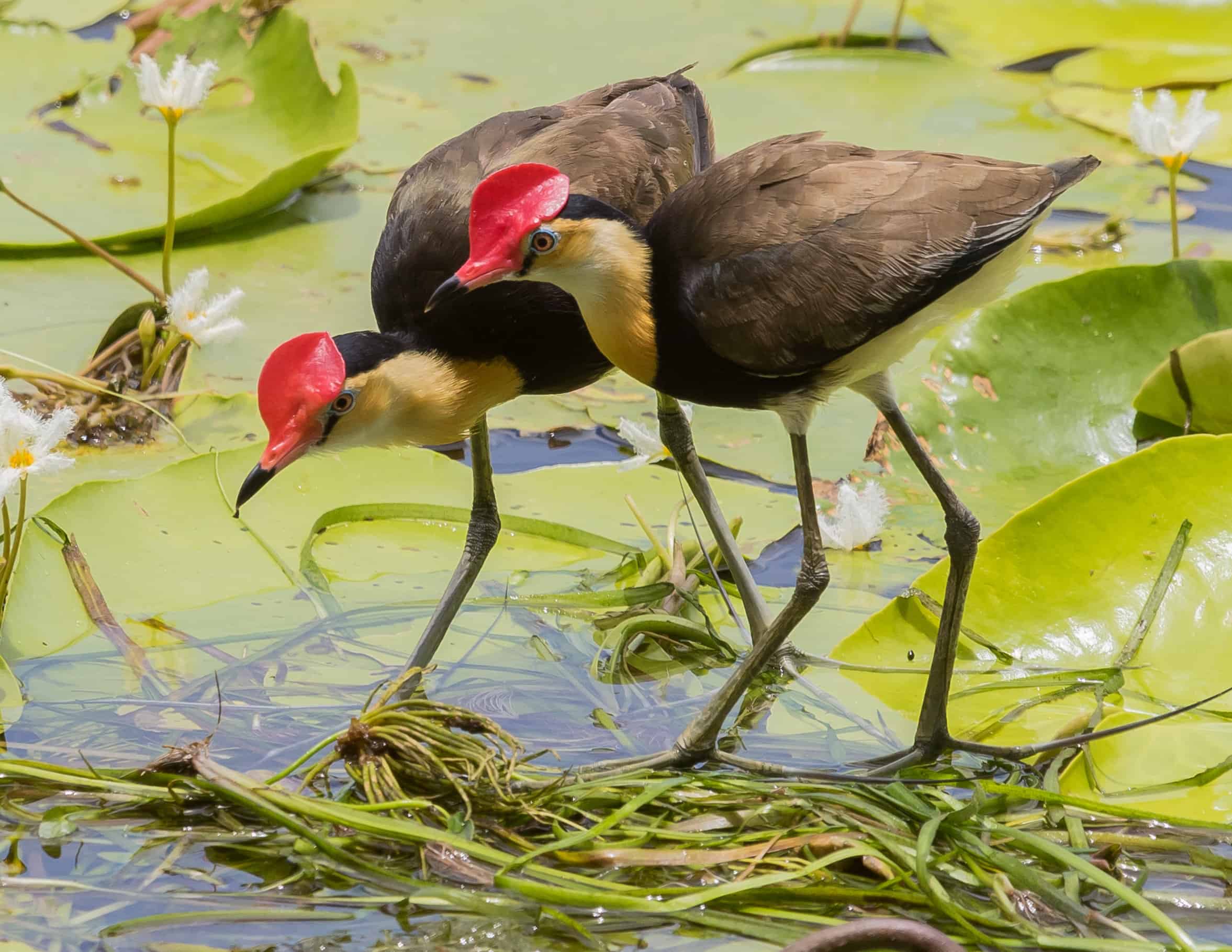
Combcrested Jacana Pictures AZ Animals
The comb-crested jacana is also known as the lotus bird, lily trotter or Jesus bird, as it often seems to be walking on water. This bird is named for its fleshy red forehead comb. Adult jacanas have a black crown, back and breast and a white belly, face and throat. Young jacanas resemble the adult birds but are less colourful.
Comb Crested Jacana Project Noah
Scientific Name Irediparra gallinacea Read our Complete Guide to Classification of Animals. Comb-crested Jacana Conservation Status Least Concern Comb-crested Jacana Locations Asia Oceania Comb-crested Jacana Facts Prey Insects, mollusks, crustaceans, and various invertebrates Main Prey Insects Name Of Young Chicks Group Behavior Social Fun Fact

Pin page
The range of the Comb-crested Jacana varies year by year depending on drought or flood. With the high concentration of native flowers on our ephemeral lagoons and lakes near Broome at the moment it can almost be tricky to find the Comb-crested Jacanas. As is often the case, by sitting and watching you soon discover there are more birds about.

Combcrested Jacana Australia Photograph by Oz Horine Fine Art America
Species names in all available languages; Language Common name; Czech: ostnák lotosový: Dutch: Australische Jacana: English: Comb-crested Jacana: English (United States)

Combcrested Jacana (Image ID 35676)
The Comb-crested Jacana is a wader found in Australia PNG and SE Asia. Here we look at the environment breeding and habitat of this rather aggressive bird that has a special niche for.more.

Combcrested Jacana (Metopidius [Irediparra] gallinacea)
Description Unmistakeable. Black crown and hindneck with fleshy red wattle covering forehead and forecrown. White face and throat. Broad black band on lower breast with white belly. Underwing black. Back and upperwing mainly grey-brown with black primary coverts, rump and tail. Long legs with extremely long toes.

Combcrested Jacanas David Bettini
Click here for more information about the Red List categories and criteria Justification of Red List category This species has an extremely large range, and hence does not approach the thresholds for Vulnerable under the range size criterion (Extent of Occurrence <20,000 km2 combined with a declining or fluctuating range size, habitat extent/quality, or population size and a small number of.

Avithera Combcrested Jacana
The Comb-crested Jacana is sedentary on permanent wetlands, but some dispersion is reported according to the availability of flooded wetlands at the beginning of the wet season. While flying, the long legs and feet extend beyond the tip of the tail. The Comb-crested Jacana flies swiftly with rapid, shallow wingbeats.
Combcrested jacana waterbird carrying chicks to safety captured in remarkable pictures ABC News
Comb-crested Jacana. Number observed: 2. Details. around the western edge of the green mound, and lifting and flying surprisingly high before coming back down again. Media. Australian Ibis. Number observed: 3. Media. Osprey. Number observed: 2. Breeding & Behavior Code: ON Occupied Nest (Confirmed) Media.
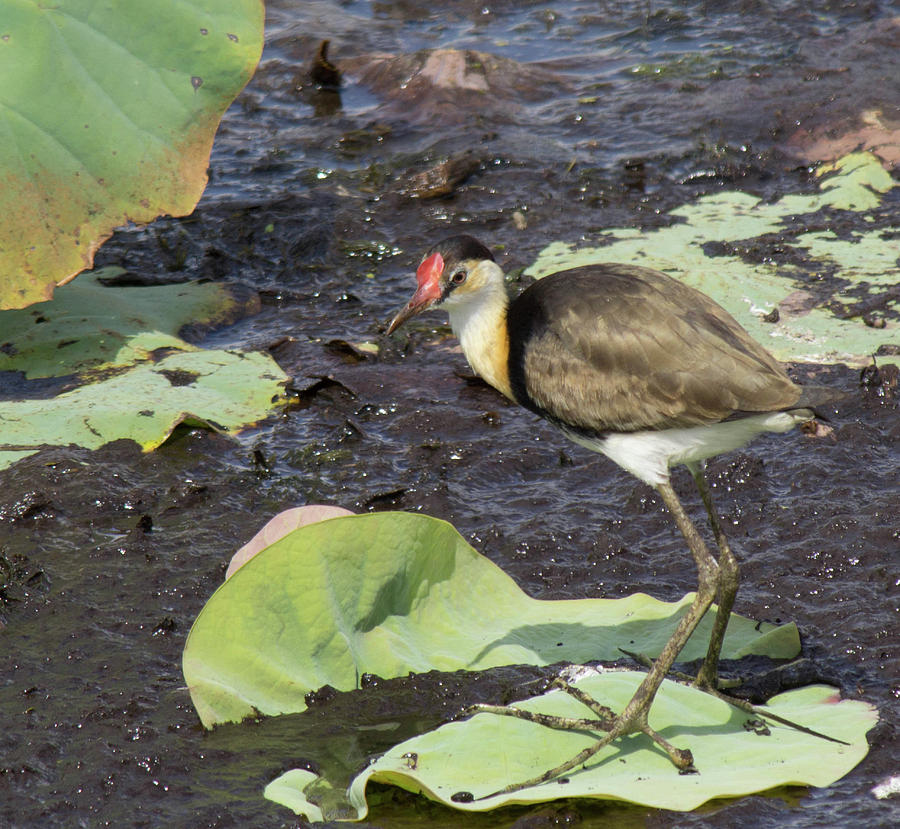
Comb Crested Jacana Photograph by Trevor Smart
Comb-crested Jacana Basic Information Scientific Name: Irediparra gallinacea Featured bird groups: Water birds Atlas Number: 171 What does it look like? Description: The Comb-crested Jacana, also known as the Lotusbird, has a red fleshy forehead comb, a black crown, back and breast and brown wings.

Combcrested jacana (Irediparra gallinacea) Aves hermosas, Aves, Especies
The Comb-Crested Jacana is a fascinating bird species that can be found in various parts of the world. With its unique physical characteristics and interesting behaviors, this bird has captured the attention of researchers and nature enthusiasts alike.
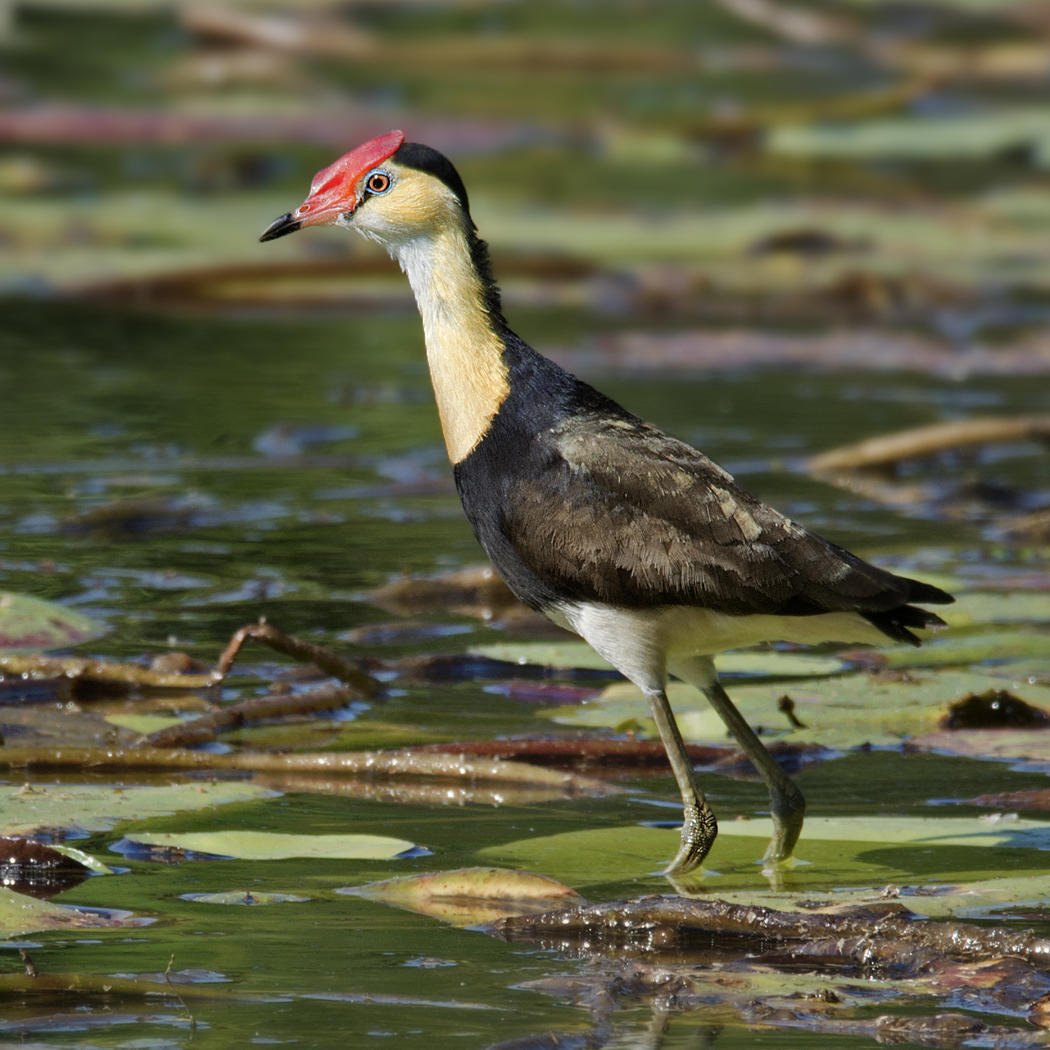
Fotografía Jacana crestada Jacana) de Salvador Solé Soriano
The comb-crested jacana , also known as the lotusbird or lilytrotter, is the only species of jacana in the genus Irediparra. Like other jacana species, it is adapted to the floating vegetation of tropical freshwater wetlands.

Combcrested Jacana (Metopidius [Irediparra] gallinacea)
Sometimes referred to as the lotus bird, or Jesus bird, for its ability to seemingly walk on water, the comb-crested jacana is a highly distinctive Australian native waterbird with some very unusual behaviours.